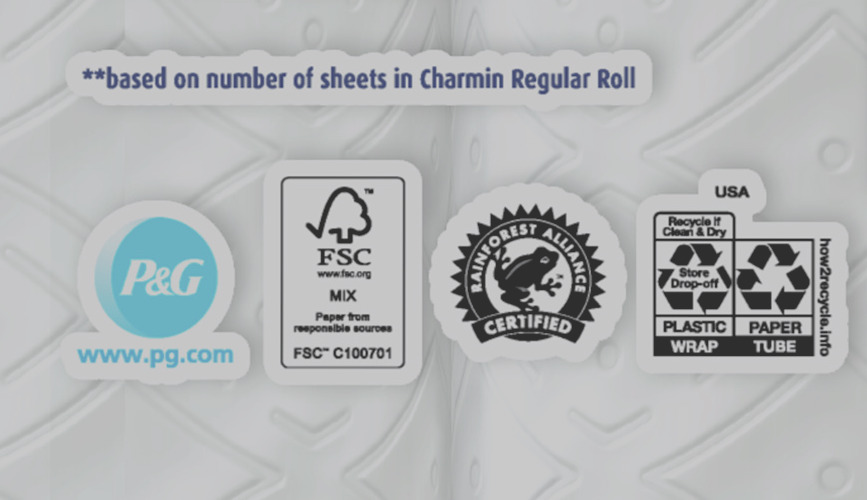
Sheltering 80 percent of the world’s land biodiversity and sequestering twice as much carbon dioxide as they emit, forests easily make their case for preservation — a case made urgent by increasing deforestation. Though forests still cover about a third of the earth’s land area, they were almost twice as prevalent before human civilization emerged. Clearly, those that remain are worth protecting.
The good news is that organizations, individuals and businesses around the world are taking heed of these factors and transforming the way forests are managed. The Forest Stewardship Council (FSC) is one organization that’s working with stakeholders to restore ecosystems and certify products as responsibly sourced. Shoppers can also contribute to ensuring the sustainable management of forests by choosing products that display an FSC logo.

What the little tree logo on product packaging really means
We’ve all seen the FSC’s tree logo on products ranging from shoes to toilet paper to furniture. But what does it really mean for a product to come from responsibly managed forests and to be certified by the FSC?
The resources used to make an FSC-certified product are sourced from forests managed using a set of universal responsibility principles. These guidelines are applied specifically, based on the industry, environment and community. To be certified, forests are checked by independent auditors for compliance. The FSC system also includes a chain of custody certification that tracks materials and products through each step of their supply chains.
FSC has become the global standard for sustainable forest management. The idea gained momentum after the 1992 Rio Earth Summit failed to produce any international, legally binding commitment to combat deforestation. Instead, businesses, environmental organizations and community leaders formed a voluntary and market-based approach to preservation. As FSC members envisioned, consumer demand for sustainable products has risen over the years — and the number of certified forests and products increased in kind.
Now, over 25 years later, FSC members from economic, social and environmental chambers regularly convene to decide on appropriate standards for forest management. Members include labor unions, Indigenous tribes and associations, businesses, and environmental groups such as the WWF, the Nature Conservancy and Sierra Club.
“These groups come together, and through a process of negotiation and consensus define what responsible management means,” said Brad Kahn, director of communications for FSC U.S.
The FSC’s guiding principles cover the gamut of forest needs and services — from workers’ rights to Indigenous peoples’ rights to conservation values. To date, almost 500 million acres of forest have been certified, and 37,000 chain-of-custody certificates have been granted. The U.S. alone is home to over 35 million certified acres, and nearly 4,000 U.S. companies have gained chain-of-custody certification for a material or product. Brands such as Allbirds, Burton, Charmin, Patagonia and many others source from FSC-certified forests.
The shopper’s role: Look out for the FSC tree
Shoppers have a significant role to play in the FSC’s vision of meeting the world’s need for forest products without compromising forest health.
“By looking for the FSC logo on the products they buy, consumers can really help protect forests as forests, even as they use products from those forests every day,” Kahn says. “There’s a lot of things in the world that are very difficult to make a difference on — buying FSC-certified products with the logo on it [is] a simple action with a profound impact for consumers to try to make the world a better place.”
Hands-off doesn’t necessarily mean healthier forests
Before we dive into what exactly goes into responsible forest management, it’s important to clarify a common misconception about forest well-being: the assumption that forests are best off without human intervention, in a bubble unspoiled by the outside world.
Kahn has a few words to offer in response. In an era defined by human activity, there’s no such thing as a forest untouched by human impact, Kahn tells TriplePundit: “We are managing forests,” he explained. “We just need to be explicit about it so that we achieve the kinds of outcomes that we're hoping to achieve — whether those are environmental protections, social protections, or economic outputs like timber and pulp.”
Even the concept of an untouched forest is flawed at the outset, Kahn notes: For example, Indigenous peoples have lived in North America for thousands of years, all while engaging deliberately in forest management.
Managing forests to prevent deforestation
It may seem counter-intuitive, but supporting economic activity in forests ensures they are more likely to remain forests. To understand why, it’s important to note ownership. “In a place like the United States, the vast majority of [forested] land is privately owned, and people need to earn a living,” Kahn explains. “If they can earn a living from managing their forests, then they have an incentive to keep those forests as forests.” Alternatively, landowners are more likely to sell their forested land to developers if they can't find a way to earn a living from it.
Approximately half of the hundreds of millions of acres of forested land in the U.S. is privately owned — and over half of those forests are owned by families and individuals. FSC’s 10 principles and 70 criteria for responsible forestry help landowners of all sizes make their forests economically viable and healthy — goals that go hand-in-hand.
Logging isn’t the only business option. Hunting, recreation, mushroom harvesting, fuel wood gathering, carbon storage and clean drinking water are some of the economic opportunities Kahn lists as examples.
Forests: Carbon problem or climate solution?
Of course, the ultimate goal of managing forests responsibly is to stave off global crises such as climate change. "Forests are right now both a cause and a solution to climate change,” Kahn says. “They're a cause because deforestation — and what's called conversion of forests to other things like agriculture, ranching or housing developments — is causing a lot of carbon emissions.”
On the other hand, “One of the most powerful things we can do to fight climate change is allow our forests to grow a little bit older … and then also look for reforestation and planting trees where there used to be forests,” he explains. “Growing trees offers a lot of potential to store carbon and fight climate change.”
Contrary to popular belief, forest restoration often requires very hands-on management to achieve the conditions that support wildlife, clean water and store carbon, he explains. Even within the few decades of the FSC’s existence — a trivial amount of time to most trees — businesses have already begun to invest in reforestation, but there is still more work to do and benefits to realize. Recent research indicates that global reforestation programs could remove two-thirds of all the manmade emissions in the atmosphere today, a figure scientists described as “mind-blowing.”
“The potential is literally everywhere — the entire globe,” said Tom Crowther, a professor at the Swiss university ETH Zürich, who led the research. “Every one of us can get involved.”
This article series is sponsored by Procter & Gamble and produced by the TriplePundit editorial team.
Image credit: Liam Pozz/Unsplash and Procter & Gamble

Roya Sabri is a writer and graphic designer based in Illinois. She writes about the circular economy, advancements in CSR, the environment and equity. As a freelancer, she has worked on communications for nonprofits and multinational organizations. Find her on LinkedIn.














